THE F CHORD FAMILY
F, BE, and C7 Chords
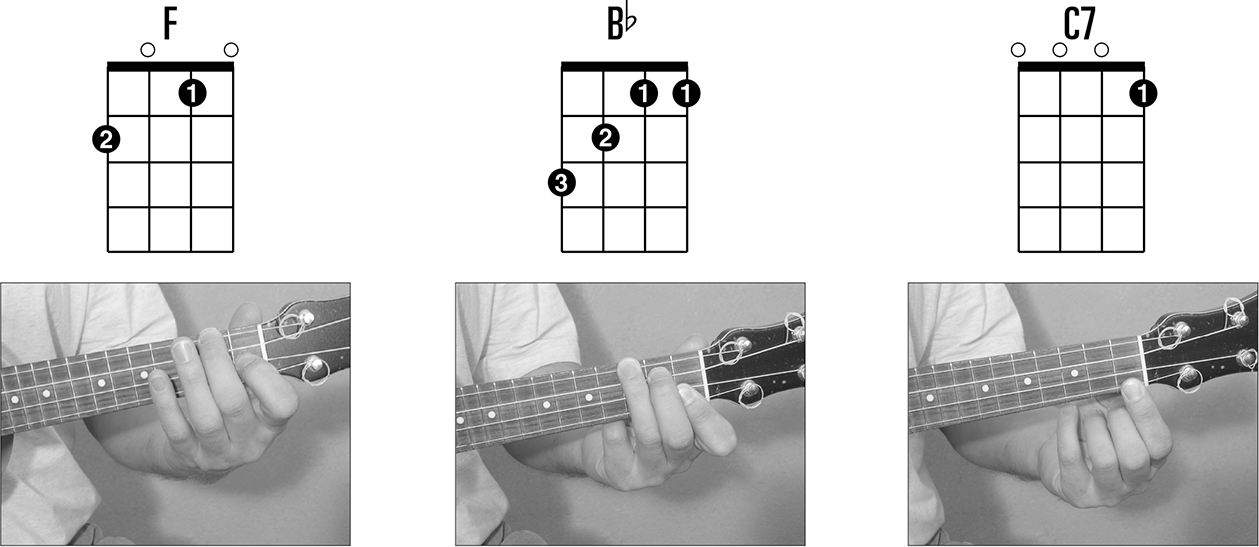
Try playing the F chord all by itself.

Now let’s add the C7 chord.
HUSH LITTLE BABY

Finally, let’s add the BE chord.

Try strumming the following exercise à la “Rolling in My Sweet Baby’s Arms.” The finger strum pattern is easy to hear and follow. Your goal is to change chords smoothly without breaking the flow. When you can do this, you’ll be ready to learn other songs in the key of F.
Rolling
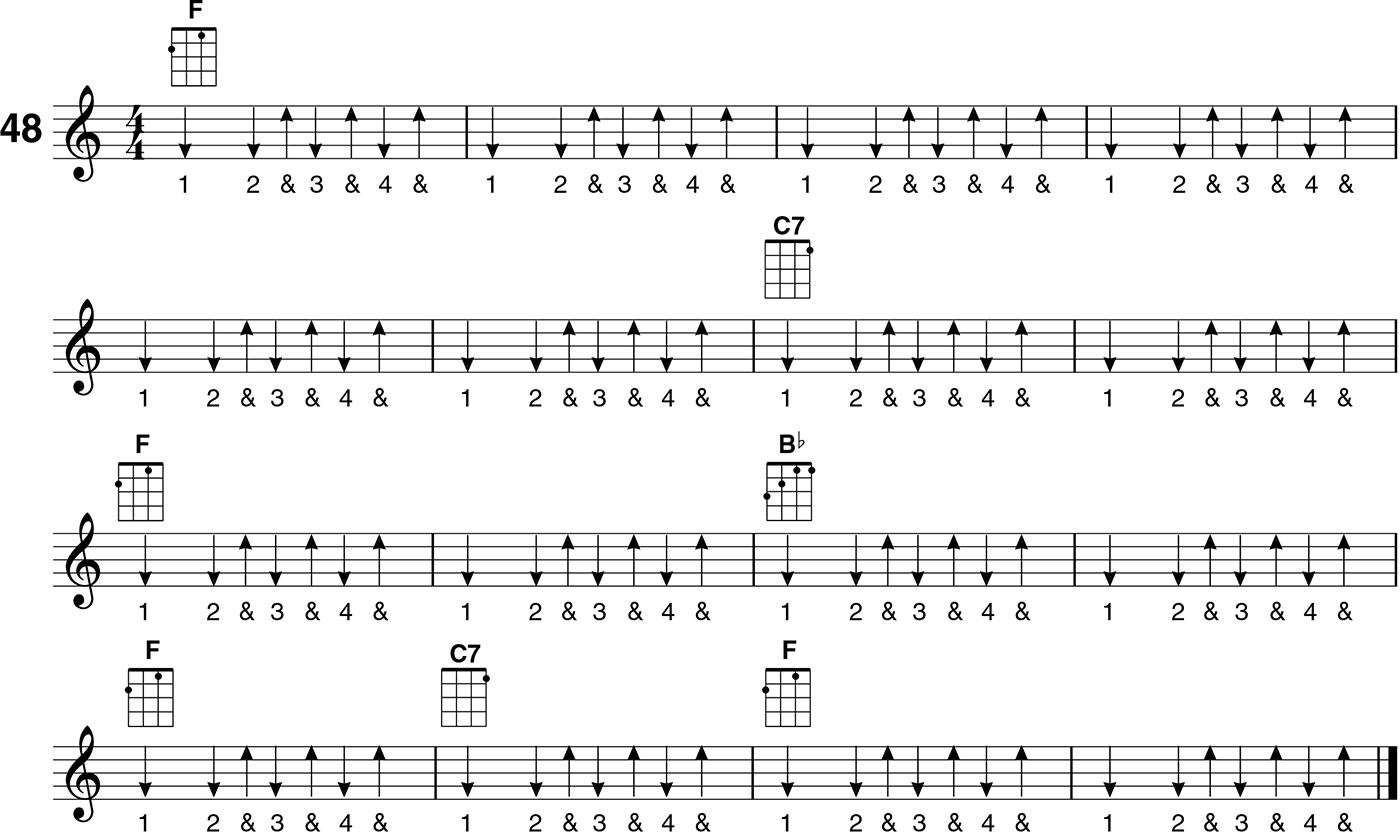
JUKING THE UKE
While the most common type of blues structure is the 12-bar (because it has twelve measures), blues tunes come in all shapes and sizes, from eight, twelve, sixteen, to even thirty-two bars. Here’s an eight-bar example. The finger strum pattern is easy to hear and follow.
Lil’ Rev

SHARPS AND FLATS
The symbol stands for sharp and raises the pitch by a half step (or one fret). When you see the sharp symbol before a note on the staff line, you raise that note by playing up one fret. Conversely, when you see the flat symbol (E), you play that note one fret down.
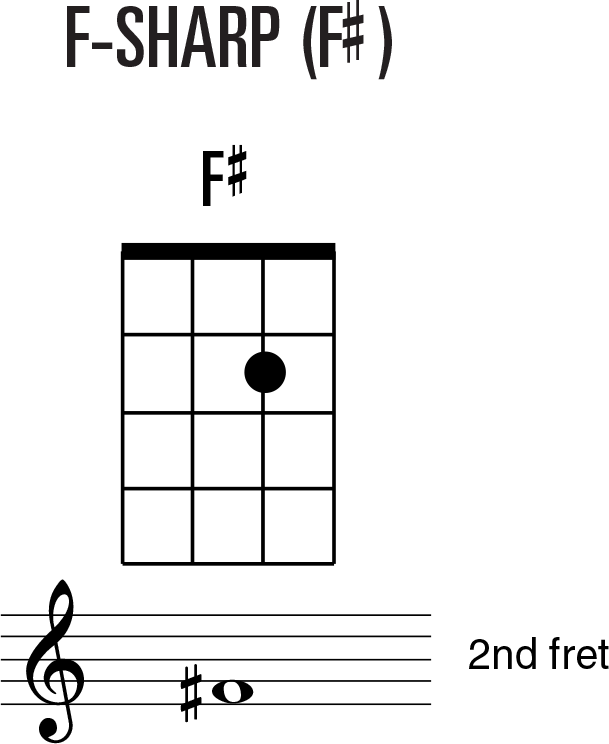
DOWN IN THE VALLEY
Southern Folk Song
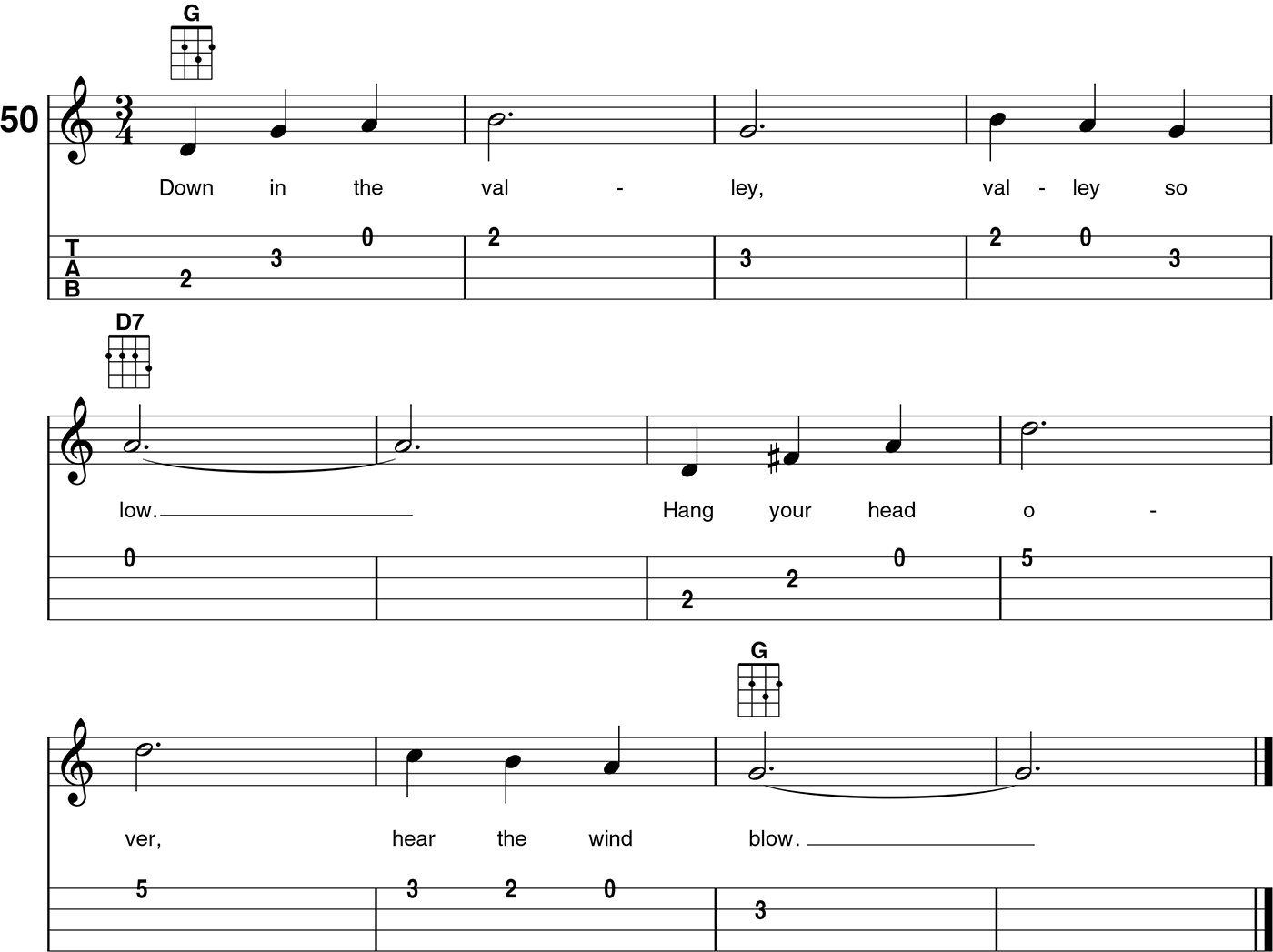
Now try playing the chords to this tune along with the audio.
KEY SIGNATURES
One convenient way to avoid assigning a flat (E) to every B in a piece of music is to simply put a flat sign at the beginning of each line. Then every time you see a B note, you play a BE. This is called a key signature and it works for all kinds of sharps and flats. The exercises below use the key signature.
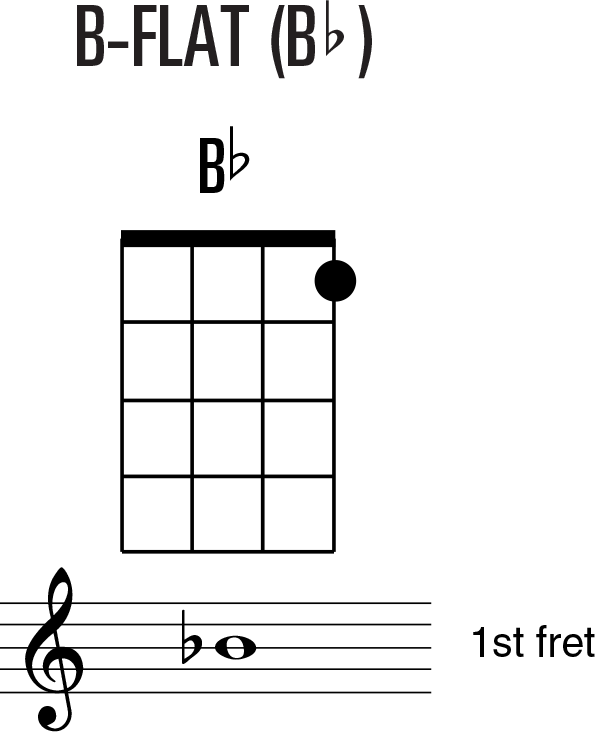


PRACTICE TIP
Regular practice is essential. Practicing a half hour each day is better than practicing two hours every four days. Find a regular time of the day that works for you.
THE F MAJOR SCALE
Now that you know the BE note, you know all the notes in the F major scale. The key signature (with B flatted) tells us that we’re in the key of F. Notice the new note high F. Play this with your pinky finger on the 8th fret of the first string.

CLEMENTINE

Moving up the F major scale:

Now let’s try playing a basic melody in the key of F using our thumb to pick each note. Go slowly first and gradually pick up speed.
PAW PAW PATCH
Traditional Folk
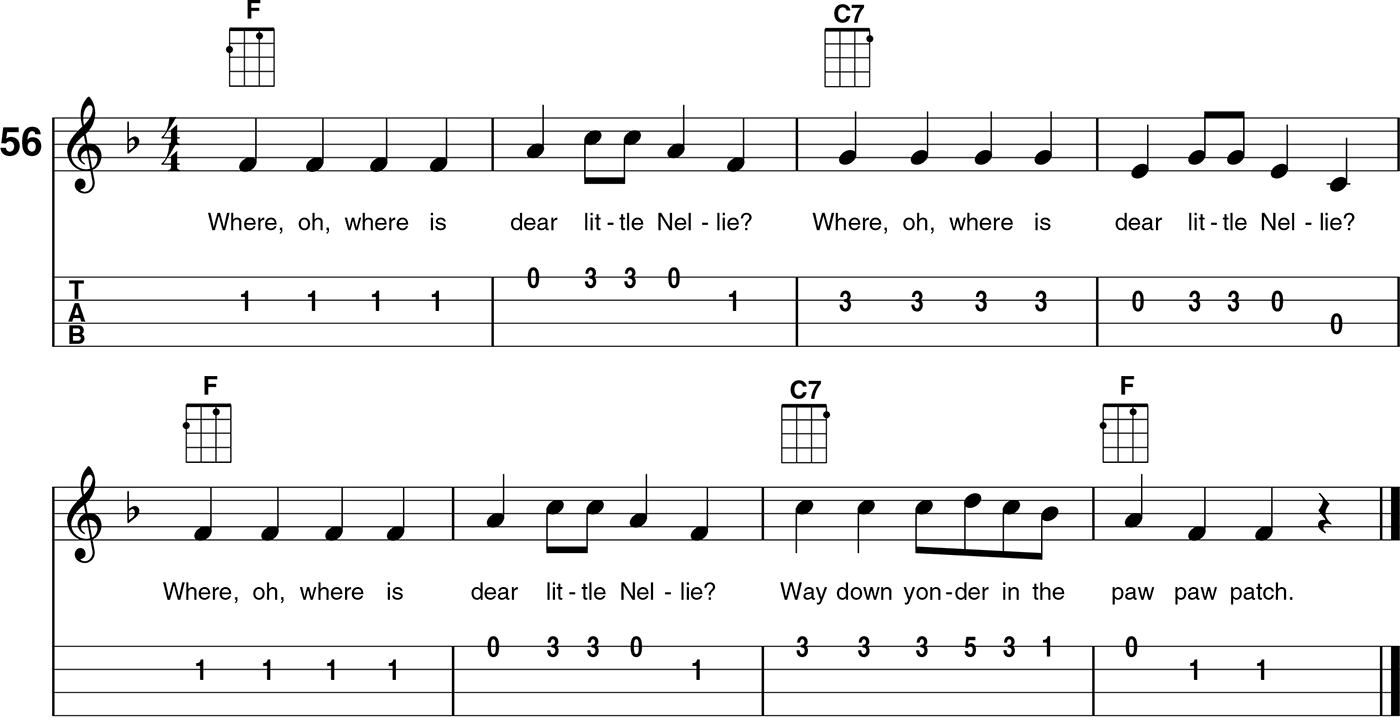
Here’s a great melody for you to practice in the key of F. After you can pick the melody well, go back and try to sing and strum while tapping out the rhythm with your foot.
SKIP TO MY LOU
American Game Song
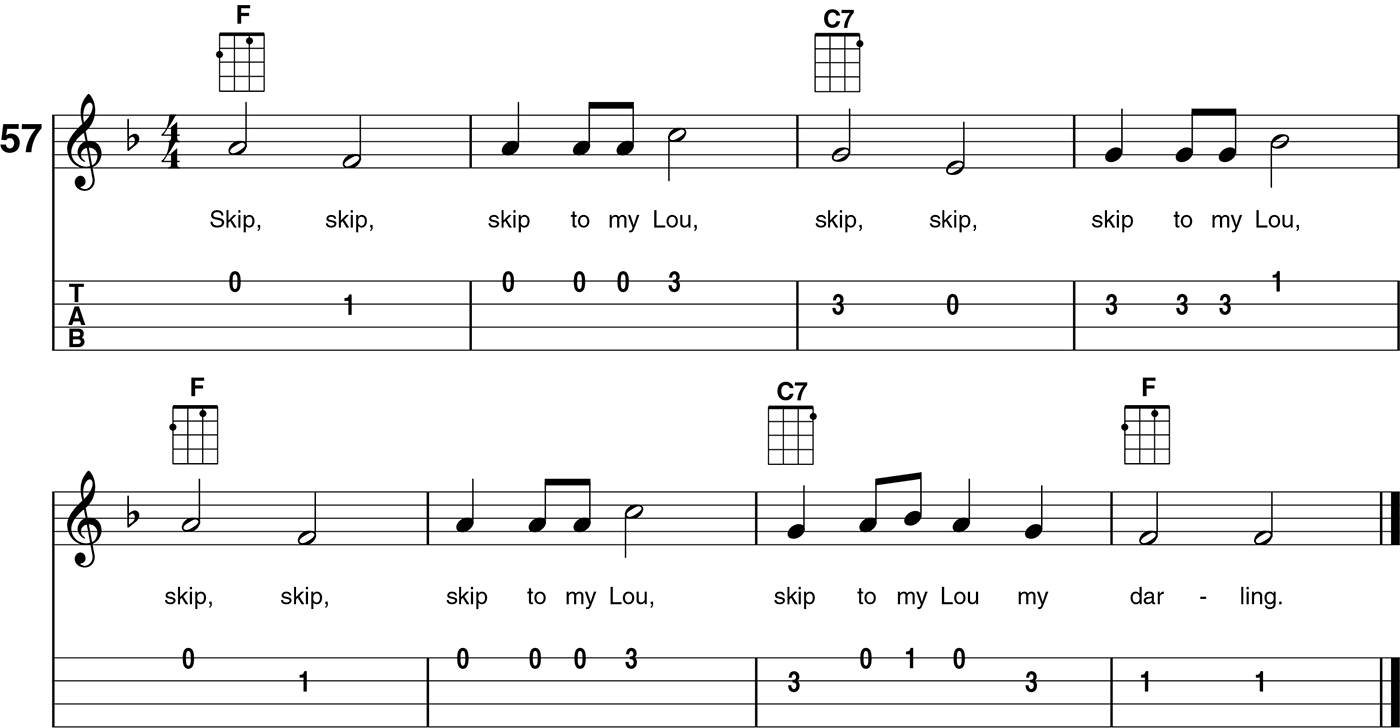
Notice the new key signature in these next two songs. Remember to play every F note one half step higher to F.
IN THE MOON’S PALE SHIMMER
(Au Claire de la Lune)
French Folk Song
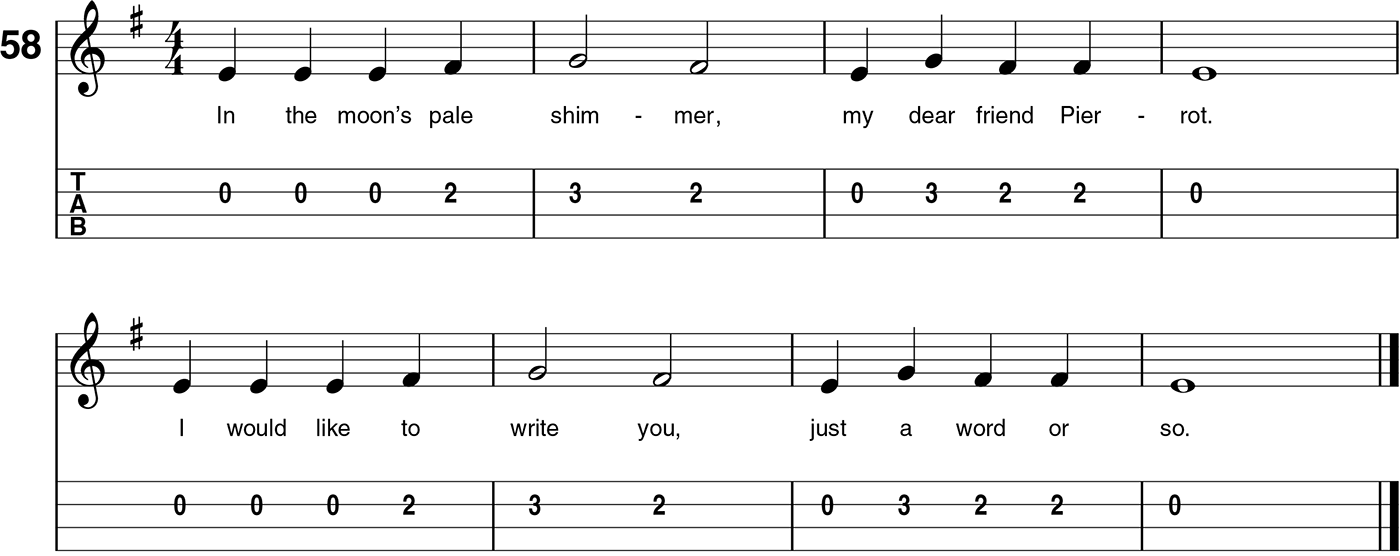
Watch for Fs in the thirteenth and fifteenth measures.
SHE’LL BE COMING ’ROUND THE MOUNTAIN
Folk Song
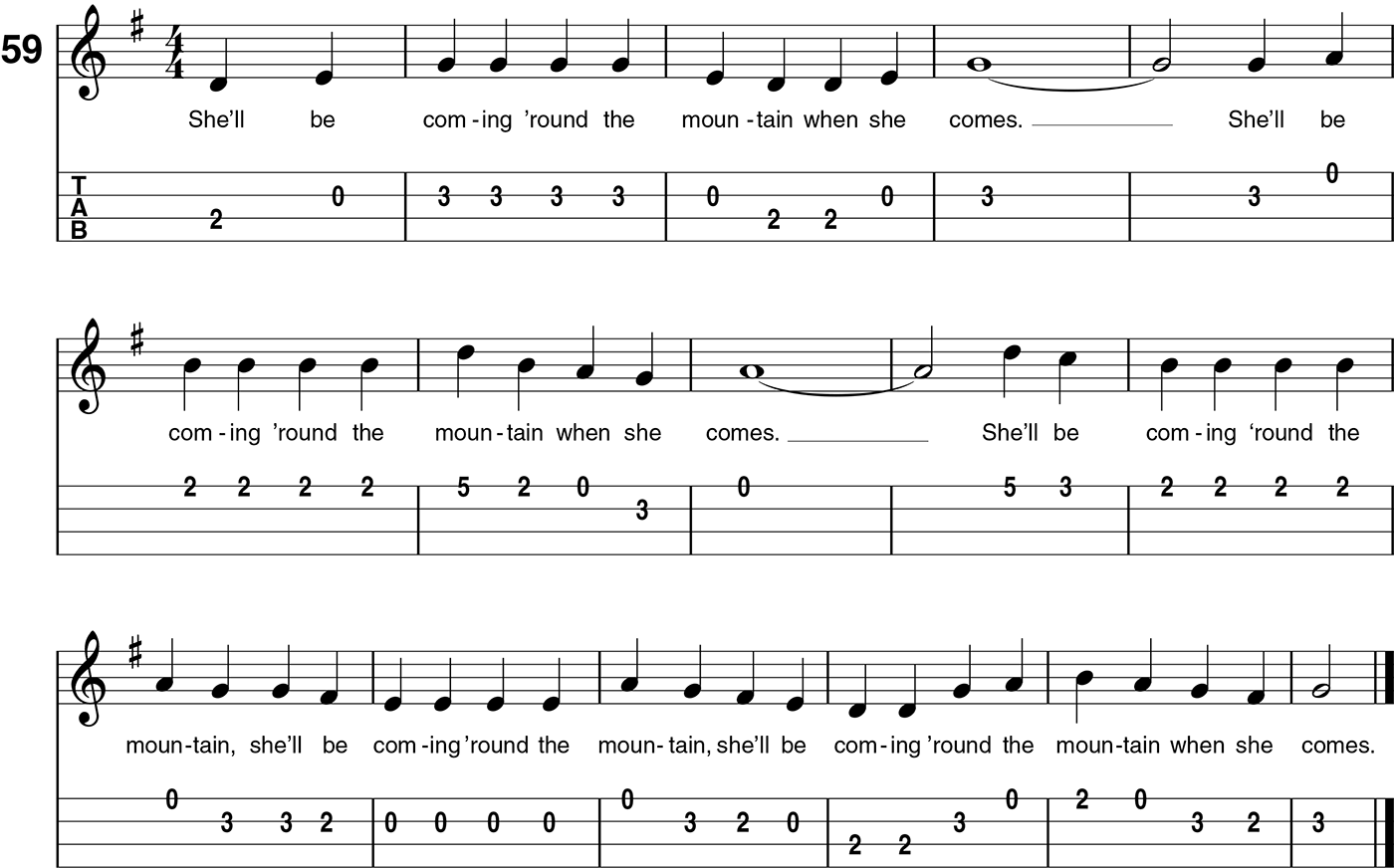
THE SINGLE ROLL STROKE
The roll stroke is a lively rhythmic strumming technique that emphasizes the downbeat of the strum by unraveling your righthand fingers one-by-one. When properly executed, it should sound like one continuous flowing beat.
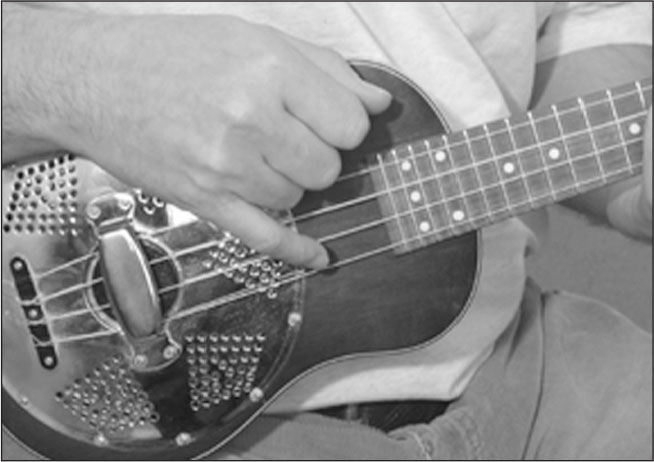 | 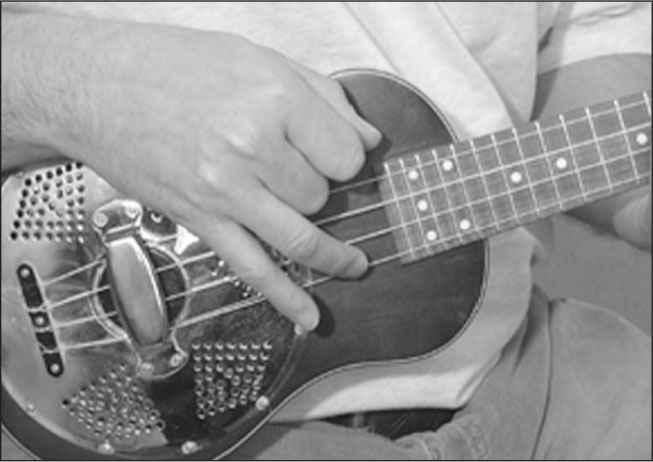 |
| 1. Bring your right-hand pinky down across all four strings. | 2. Let your third (ring) finger follow right after your pinky. |
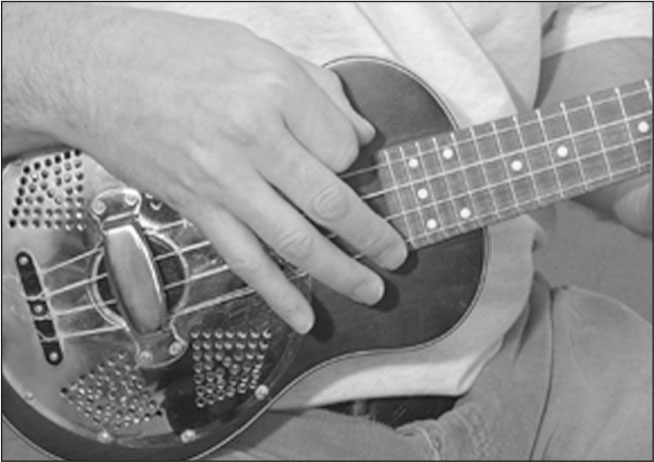 | 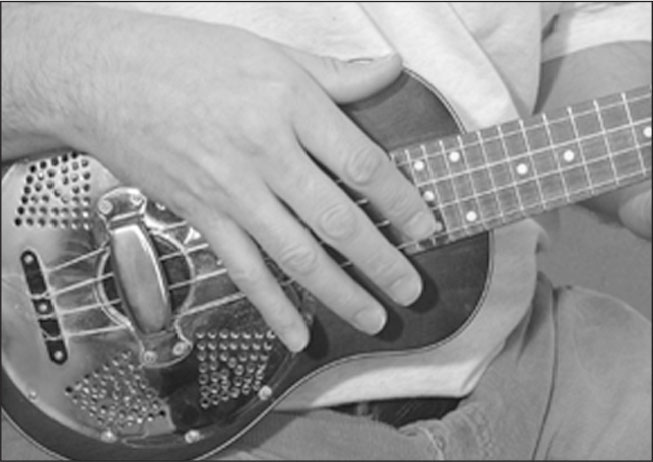 |
| 3. Now your second (middle) finger follows down across all four strings. | 4. Finally, bring your pointer finger down across all of the strings. |
Think of your fingers unraveling in a steady progression, one after the next. When this is mastered, you can try adding your thumb, which will follow right after the pointer finger in its downward motion.
At the end of “Shave and a Haircut,” try the roll stroke on the D7 chord, then quickly over the G chord. This may take a little practice, but it’s well worth the effort. When notes and tablature are shown in stacks as seen below, this indicates a chord, or a group of notes played simultaneously.
SHAVE AND A HAIRCUT
Bluegrass Lick

This lick is traditionally used to end songs. When you have it up to speed, you can use it to end songs in the key of G (including “Boil ’Em Cabbage Down”).
Beverly Uke-a-Billy Challenge: See if you can figure out how to play this lick in other keys.